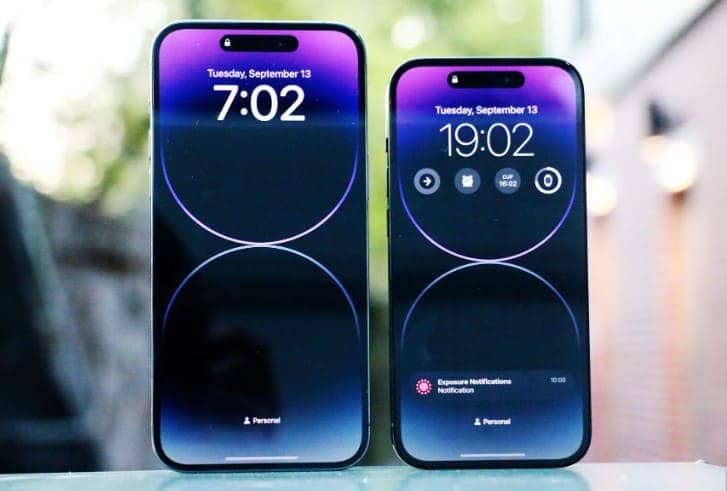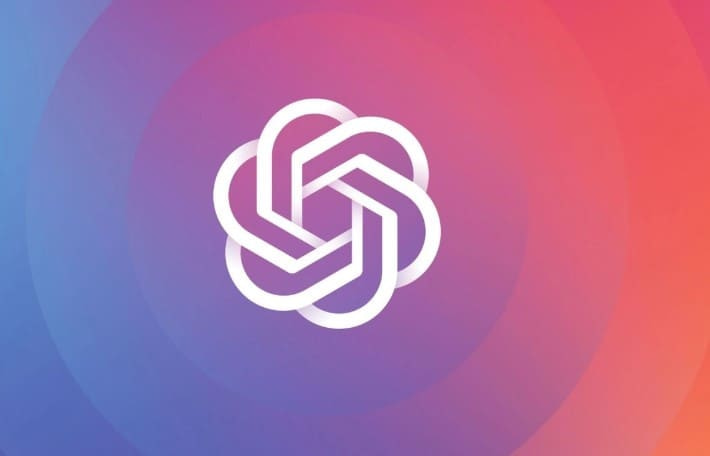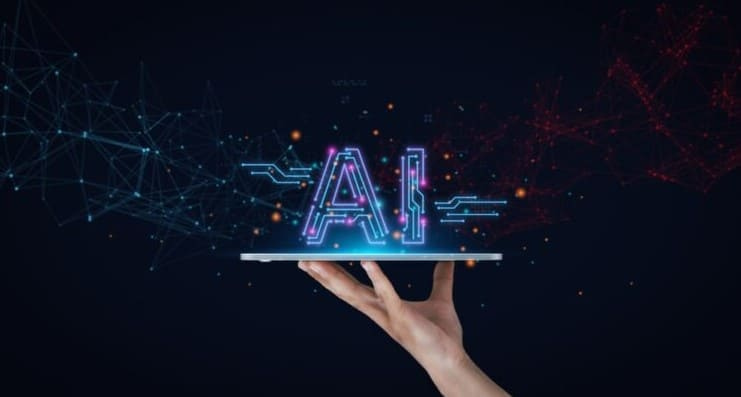
ChatGPT Can Now Talk to You: Revolutionizing Communication
The communication technology landscape is constantly in flux in our rapidly changing world. Among the most thrilling advancements in this realm is the newfound capability of ChatGPT to partake in substantial dialogues.
In this article, we’ll explore how ChatGPT can now talk to you and revolutionize our interactions with AI.
ChatGPT’s Evolution: From Text to Speech
The development of ChatGPT has been nothing short of extraordinary. Initially, it was a text-based AI model, proficient in generating text based on prompts. However, introducing speech capabilities has elevated ChatGPT to a whole new level. Now, it can understand your reader and respond in a natural, human-like voice.
Within the domain of artificial intelligence, there exist only a handful of breakthroughs that have ignited the curiosity of both technology enthusiasts and the broader population as profoundly as ChatGPT’s transition from a text-centric AI to a conversational juggernaut, equipped with the capacity to produce speech that eerily resembles human conversation. This transition marks a monumental achievement in the ever-advancing landscape of AI technologies and carries profound implications that extend across a diverse spectrum of applications.
To appreciate the journey of ChatGPT’s evolution, it’s crucial to understand its roots as a text-based AI model. Initially introduced as a text generator, ChatGPT exhibited remarkable capabilities in understanding and generating text based on user prompts. It quickly became a valuable tool for various tasks, from answering questions to generating creative content. However, its interaction was primarily confined to the written word, limiting its potential applications.
The pivotal moment in ChatGPT’s journey came with integrating speech capabilities. This groundbreaking development shifted from mere text generation to dynamic, spoken interactions. Adding a natural, human-like voice elevated ChatGPT to a new level of versatility and functionality. It enabled ChatGPT to understand text-based queries and respond in real-time with spoken words.
The power of this transformation becomes evident when we explore the practical applications of ChatGPT’s newfound speech capabilities. Virtual assistants, for example, have greatly benefited from ChatGPT’s ability to engage in conversations. Imagine asking your virtual assistant a question and receiving a spoken response that sounds remarkably like a human. This level of interaction enhances user experience and makes AI-driven virtual assistants more engaging and valuable.
Customer support chatbots have also seen a significant upgrade with ChatGPT’s speech capabilities. Users can now have fluid and natural conversations with these bots, resolving issues and getting assistance without the frustration of deciphering complex text-based responses. This innovation has the potential to revolutionize customer service across industries.
Language translation services have been another beneficiary of ChatGPT’s evolution. With the ability to speak multiple languages fluently and naturally, ChatGPT has effectively broken down language barriers. Businesses operating in international markets can now communicate effortlessly with customers worldwide, fostering global connections and facilitating cross-cultural interactions.
However, it’s important to note that ChatGPT’s journey from text to speech has been challenging and challenging. While it can generate spoken responses that sound remarkably human, there are still instances where the reactions may not be as accurate or contextually appropriate as a human’s. This highlights the ongoing need for refinement and improvement in AI technology.
Furthermore, integrating speech capabilities has raised ethical questions and concerns regarding the potential misuse of AI-generated voices. As AI systems become increasingly capable of mimicking human speech, there is a need for responsible use and regulation to prevent abuse, such as deepfake voice impersonations.
The transformation of ChatGPT from a text-based AI to a conversational AI with speech capabilities marks a significant advance in artificial intelligence. Its capacity for meaningful discourse has the potential to revolutionize a wide range of markets, including virtual assistants, customer support, and language translation. However, it’s essential to recognize both its potential and limitations as we navigate the evolving landscape of AI technology. As ChatGPT continues to evolve and improve, it undoubtedly plays a pivotal role in shaping the future of human-AI interactions.
The Power of Conversational AI
Conversational AI emerges as a groundbreaking innovation poised to revolutionize our interactions with machines and digital interfaces in a contemporary landscape where technology becomes ever more entwined with our daily existence. Conversational AI denotes artificial intelligence systems adept at engaging in human-like dialogues with users. Whether we’re considering virtual assistants, chatbots, or language translation services, the pervasive influence of Conversational AI is reshaping the contours of human-computer interaction.
Central to the remarkable promise of Conversational AI is its unique ability to enhance the user experience across a diverse range of applications. Virtual assistants like Siri, Google Assistant, and Amazon’s Alexa have surged beyond mere practicality to attain the status of indispensable fixtures in our households, and the factors driving their ubiquity are strikingly evident.
These AI-driven companions can comprehend and respond to natural language inquiries, execute tasks, and furnish information, rendering them indispensable allies for countless individuals.
Now, envision an AI-powered virtual assistant capable of comprehending your vocal commands and responding in a manner that emulates human conversation. This more sophisticated degree of interaction encourages a deeper bond between people and their technical tools, making work more approachable and pleasant. The transformative power of conversational AI rests not just in its practicality but also in its capacity to give technology a human touch, ushering in a time when interactions between people and machines are more effortless and intuitive than ever. Whether setting reminders, checking the weather, or controlling smart home devices, Conversational AI simplifies complex operations through intuitive dialogue.
Customer support chatbots are another prime example of the power of Conversational AI. These chatbots are deployed by businesses to handle customer inquiries and issues efficiently. Instead of navigating through a maze of menus or waiting on hold, customers can engage in natural conversations with chatbots, receiving instant assistance. In addition to increasing customer happiness, this lightens the workload of human customer support representatives so they may concentrate on more challenging jobs.
Breaking down language barriers is another remarkable application of Conversational AI. Language translation services have greatly benefited from AI’s ability to understand and generate speech in multiple languages. Travellers, business professionals, and anyone communicating across language boundaries can now rely on AI to facilitate seamless conversations. This has profound implications for global communication, trade, and cultural exchange.
The power of Conversational AI extends to industries beyond customer service and language translation. Healthcare, for instance, is witnessing the integration of AI-driven virtual nurses and health assistants that can provide medical information, monitor patient conditions, and offer medication reminders. Education is also experiencing a revolution, with AI-powered tutors and language learning apps that engage students in interactive conversations, making learning more engaging and personalized.
Furthermore, Conversational AI is bridging the gap in accessibility for individuals with disabilities. Voice-controlled devices and applications empower people with visual impairments or mobility challenges to navigate technology effortlessly. These AI-driven interfaces understand voice commands and can read aloud text, improving the overall quality of life for those with disabilities.
However, it’s crucial to acknowledge that while the power of Conversational AI is substantial, it’s not without its limitations. AI systems, including chatbots and virtual assistants, may occasionally struggle with complex or context-heavy queries. They can provide accurate responses within their programmed capabilities, but human intervention remains essential in some situations.
Moreover, ethical considerations come into play as Conversational AI becomes more sophisticated. Ensuring the responsible use of AI, protecting user privacy, and preventing AI-driven misinformation are pressing challenges that must be addressed as this technology evolves.
The power of Conversational AI is reshaping how we interact with machines and digital interfaces. Its ability to enhance user experiences, simplify tasks, break language barriers, and improve accessibility underscores its transformative potential. As AI advances, Conversational AI will play an increasingly integral role in our daily lives, enriching our interactions with technology and expanding our horizons in countless ways.
Enhancing User Experience
ChatGPT can now talk to you, and this advancement holds immense potential for enhancing user experience across various applications. Whether virtual assistants, customer support chatbots, or language translation services, ChatGPT’s ability to engage in conversations makes interactions more seamless and enjoyable.
Within the domain of artificial intelligence, ChatGPT has emerged as a formidable catalyst, reshaping the dynamics of user interactions with technology and significantly elevating the overall user experience. Developed by OpenAI, this groundbreaking AI model has attracted substantial recognition for its capacity to engage in significant dialogues, and its influence on diverse applications is nothing short of extraordinary.
One of the primary ways ChatGPT enhances the user experience is through its natural and intuitive interactions. Unlike traditional interfaces that require users to navigate menus or learn specific commands, ChatGPT understands and responds to natural language queries. This means users can communicate with ChatGPT as they would with a human, making interactions more accessible and user-friendly. Whether seeking information, asking questions, or requesting assistance, ChatGPT simplifies the process by eliminating users needing to adapt to a machine’s language.
Moreover, ChatGPT’s conversational capabilities contribute to improved user engagement. The inclination of users to remain engaged and invest time in interaction is notably heightened when they perceive a responsive and attentive entity in the conversation. This heightened engagement holds exceptional value, particularly in applications such as virtual assistants, where sustaining user involvement is pivotal for the successful execution of tasks. ChatGPT’s ability to have meaningful conversations fosters a sense of connection, making users more willing to rely on AI for various tasks.
The versatility of ChatGPT further augments the user experience. It can be integrated into various applications, from virtual assistants and customer support chatbots to language translation services and content generation tools. This adaptability means that users encounter ChatGPT in diverse contexts, each tailored to their needs. Whether getting quick answers to trivia questions, drafting written content, or resolving customer queries, ChatGPT seamlessly adapts to provide valuable assistance.
Additionally, ChatGPT’s multilingual capabilities expand its user base globally. Accessing information or services is no longer hindered by language barriers. ChatGPT’s ability to engage with users in their native languages transcends linguistic divides, ushering in opportunities for cross-cultural communication and global participation. This inclusivity marks a noteworthy stride in dismantling language obstacles and fostering diversity within the digital sphere.
ChatGPT’s role in enhancing the user experience cannot be overstated. Its natural language understanding, conversational prowess, versatility, and multilingual capabilities collectively contribute to a more user-centric and engaging interaction with technology. ChatGPT continues evolving, and finding applications in various domains exemplifies how AI can be harnessed to empower users, making technology more accessible, intuitive, and enjoyable.
Remarkable Role in Eliminating Language Barriers
Language is no longer a barrier. ChatGPT’s speech capabilities can fluently communicate in multiple languages, facilitating global communication like never before. This breakthrough is especially valuable for businesses operating in international markets.
However, the advent of ChatGPT, crafted by OpenAI, has heralded a new era where linguistic boundaries are no longer impossible. ChatGPT is not just a technological marvel but a powerful force that breaks down language barriers and fosters global communication in unprecedented ways.
One of ChatGPT’s most striking features is its remarkable proficiency in multiple languages. Its unique ability to engage fluently in numerous tongues makes it a versatile tool for transcending linguistic divides. Users, regardless of their native languages, can seamlessly converse with ChatGPT, eliminating the need for translation services or language proficiency. This inclusivity is a game-changer, facilitating connections and interactions on a global scale.
Businesses operating in international markets have mainly reaped the rewards of ChatGPT’s linguistic prowess. They can now communicate effortlessly with customers and partners worldwide, transcending language constraints. This not only strengthens relationships but also unlocks fresh markets and opportunities. Once a potential obstacle, language has become a conduit connecting diverse cultures and needs.
The impact of ChatGPT’s multilingual capabilities extends beyond the corporate sphere and into the realm of education. Language is the cornerstone of learning, and ChatGPT’s capacity to provide information and engage in conversations in multiple languages enhances the accessibility of educational resources. It levels the playing field, enabling students from diverse language backgrounds to access educational materials in their mother tongue, thus promoting equitable access to education.
Moreover, ChatGPT’s role in the preservation of endangered languages is nothing short of commendable. Many languages teeter on the brink of extinction, and ChatGPT can play a pivotal role in documenting and reviving these linguistic treasures. ChatGPT contributes significantly to cultural diversity and heritage preservation by offering a platform for communication and learning.
The significance of dismantling language barriers cannot be overstated. ChatGPT’s contribution to this endeavour extends far beyond mere convenience; it is about fostering understanding, championing diversity, and constructing a more inclusive global community. Once seen as a potential divider, language has been transformed into a unifier, all thanks to the remarkable capabilities of ChatGPT. It exemplifies how technology can catalyze unity, bringing individuals from diverse corners of the world closer together through the power of language and communication.
Improved User Engagement:
One of its most profound impacts is the substantial improvement in user engagement. AI’s ability to understand, predict, and respond to user needs has elevated the user experience to new heights across various domains.
These AI-powered entities are available around the clock, providing instant responses to inquiries and resolving issues efficiently. Users no longer need to wait on hold or navigate complex menus to find answers. AI’s ability to engage in natural language conversations ensures that users feel heard and understood, resulting in higher satisfaction.
In the realm of content creation, AI-generated content has gained prominence. From news articles to marketing copy, AI can produce high-quality, contextually relevant content at scale. This streamlines content creation processes and ensures users access fresh and engaging content regularly. AI can even analyze user engagement metrics to refine content strategies further.
Furthermore, telemedicine and health monitoring tools developed using AI have increased user involvement in healthcare. Virtual health assistants powered by AI can give medical advice, monitor health indicators, and send appointment or prescription reminders. In addition to increasing user involvement in health management, this improves access to healthcare services, especially in remote or disadvantaged locations.
AI’s capacity to raise user engagement is revolutionizing how we use technology. AI is now a significant factor behind more meaningful and fruitful user interactions through personalization, effective customer service, content production, predictive analytics, and healthcare applications. As AI develops, its role in enhancing user engagement across various sectors will only become more prominent, ultimately influencing the development of more responsive, personalized, and user-centric technology.
FAQs
What is ChatGPT’s primary function now?
ChatGPT’s primary function is to engage in conversations with users, making it a versatile tool for various applications.
Can ChatGPT understand and respond in different languages?
ChatGPT has multilingual capabilities, enabling it to communicate effectively in various languages.
How does ChatGPT’s speech capability work?
ChatGPT’s speech capability is powered by advanced natural language processing techniques, allowing it to generate spoken responses that sound remarkably human.
Is ChatGPT’s speech feature available for personal use?
Yes, ChatGPT’s speech feature is available for both personal and business users, opening up new possibilities for communication.
Are there any limitations to ChatGPT’s conversational abilities?
While ChatGPT has made significant strides, it’s important to remember that it’s still an AI model and may only sometimes provide responses as accurately as a human.
Can I integrate ChatGPT’s speech capabilities into my applications?
Yes, ChatGPT offers APIs that allow developers to integrate its speech capabilities into their applications, creating customized conversational experiences.
Conclusion
The metamorphosis of ChatGPT, evolving from a text-based AI into a conversational dynamo, serves as a striking testament to the swift progressions in AI technology. This newfound capability to partake in meaningful discussions heralds a realm of boundless opportunities spanning numerous sectors, encompassing everything from customer service to language translation. As ChatGPT perpetually advances, it becomes evident that the very essence of our interactions with AI has undergone a profound and lasting transformation.
You May Also Like –
Related Posts

Ten Brilliant Iphone Shortcuts That’ll Change The Way You Useadmin . March 14, 2023

12 Best Apple MacBook Accessories in 2023admin . March 13, 2023

iPhone Experience: A Step-by-Step Guide to Redesigning App Icons withadmin . June 28, 2023

Streamlining Organization: A Step-by-Step Guide to Creating Chat Folders inadmin . June 28, 2023

The Best Home Printers for Your Needs in the USAadmin . June 7, 2023

The 10 Best iPhone 14 Accessories You Can Buy Rightadmin . March 13, 2023

Top-Rated Best Laptop for Students in Indiaadmin . March 1, 2023

Everything You Need to Know About ChatGPTadmin . March 9, 2023

The 23 Best Free Games For The iphoneadmin . March 22, 2023
Latest Posts

Exploring the Best Cash Advance Apps of 2024 April 8, 2024

Top 34 Passive Income Ideas in 2024 March 19, 2024

Top 10 Penny Stocks to Buy Canada 2024 February 23, 2024

Best Canadian Artificial intelligence stocks under $1 2024 February 23, 2024

Top Artificial Intelligence Stocks Canada 2024 February 20, 2024

